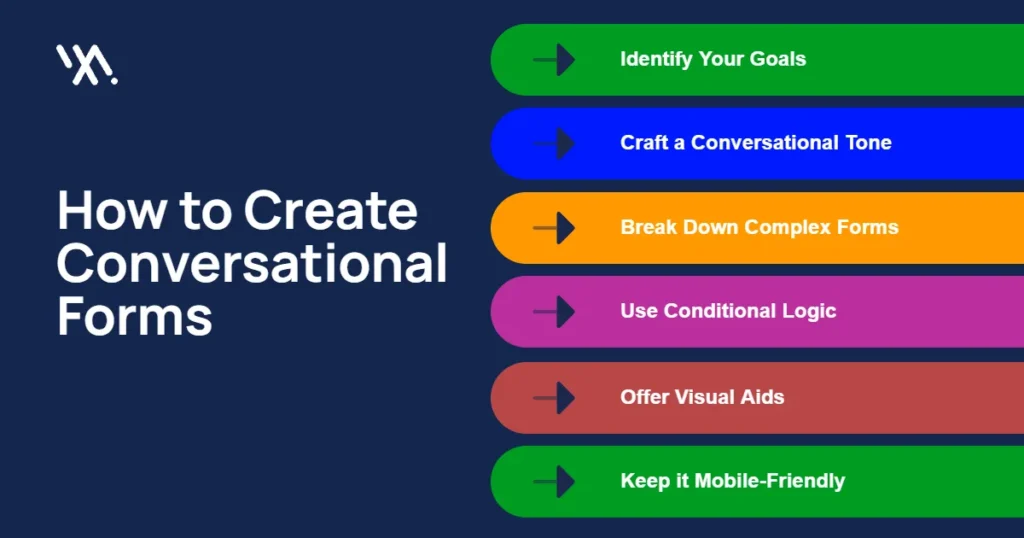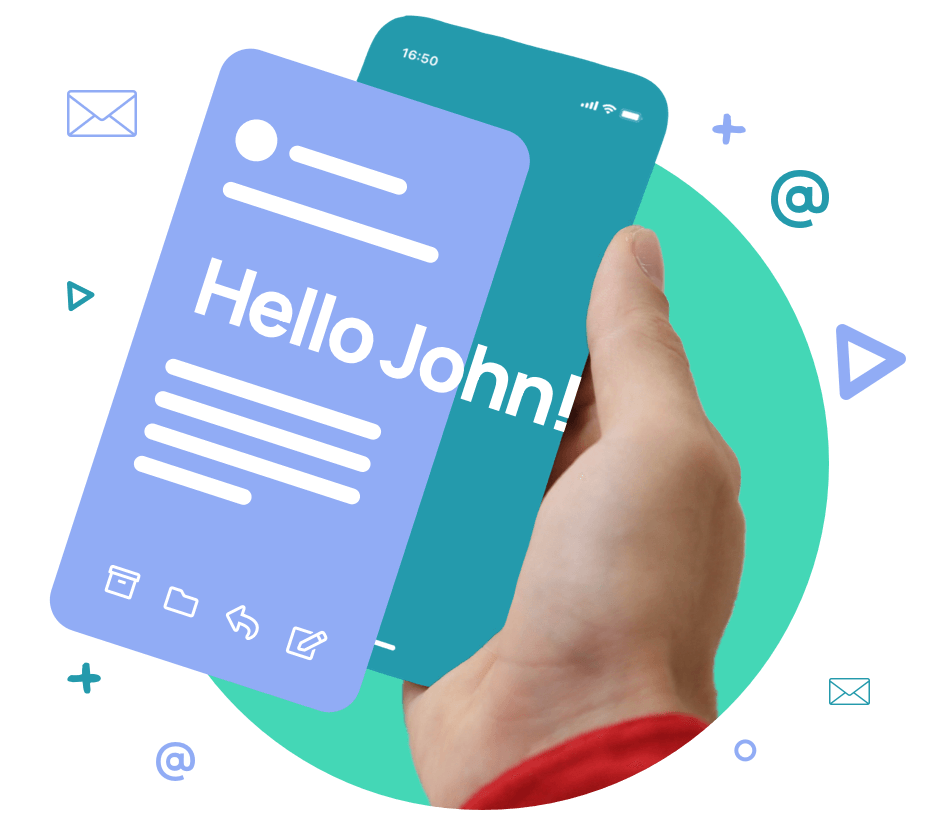Quick Links
Have you ever filled out a form online that felt like a chore? Endless questions, confusing layouts, and a general sense of being stuck in a time warp?
ProFaceoff found that 81% of users are giving up on online forms after they start filling them out. Fortunately, those days are over!
Welcome to the world of conversational form design, where online forms become engaging dialogues that boost customer engagement and skyrocket your lead generation.
This blog post will be your guide to mastering conversational form design.
We’ll explore what it is, why it works, and how to create conversational web forms that are both user-friendly and effective.
How to make online form filling fun
Let’s face it, traditional online forms can be a drag. They’re static, impersonal, and often filled with jargon. No wonder people abandon them halfway through!
Conversational forms break this mold. Many experts admit on Linkedin, that conversational elements transform static forms into dynamic conversations, mimicking a natural back-and-forth exchange.
Imagine a form that asks you questions one at a time, in a clear and friendly way. It responds to your answers, provides helpful hints, and even guides you through the process if needed. That’s the power of conversational form design.
Why conversational forms work
The human brain is wired for conversation. We respond better to interactions that feel personal and engaging. Conversational forms tap into this natural preference. Here’s why they work:
- Reduced Cognitive Load: Breaking down complex forms into smaller, bite-sized questions makes the process less overwhelming.
- Increased User Engagement: Conversational forms feel more interactive, keeping users engaged and motivated to complete the form.
- Improved Clarity: Clear and concise questions minimize confusion and ensure users understand what information is needed.
- Personalized Experience: Conversational forms can adapt based on user responses, creating a more personalized experience.
- Boost Customer Engagement: The conversational format creates a friendly and approachable atmosphere, fostering positive customer engagement.
The benefits of Conversational Form Design for businesses
Conversational form design isn’t just about making things fun (although that’s a definite bonus!). For businesses, it’s a powerful tool that can:
- Improve Lead Generation: Higher completion rates mean more leads captured.
- Boost Customer Engagement: By making interactions more enjoyable, you build stronger relationships with potential customers.
- Gather Better Data: Clear and focused questions lead to more accurate and valuable data collection.
- Reduce Form Abandonment: Engaged users are less likely to ditch your form halfway through.
- Provide a Competitive Advantage: Stand out from the crowd with innovative and user-friendly forms.
How to create conversational forms

Creating effective conversational web forms doesn’t require a team of developers. Here are some key steps to follow:
- Identify Your Goals: What information do you need from users? What action do you want them to take after completing the form?
- Craft a Conversational Tone: Write clear, concise questions that feel approachable and friendly.
- Break Down Complex Forms: Divide long forms into smaller, more manageable sections.
- Use Conditional Logic: Tailor the form’s flow based on user responses, creating a personalized experience.
- Offer Visual Aids: Include images, videos, or other visuals to enhance user understanding.
- Keep it Mobile-Friendly: Ensure your forms display and function seamlessly on all devices.
Learn all about creating conversational forms without coding in our latest blog post.
Inspiration for creative conversational forms
Conversational form design opens up a world of possibilities.
Here are a few creative online forms to inspire you:
- Product Recommendation Quiz: Instead of a static product list, use a conversational format to guide users toward the perfect product for their needs.
- Interactive Lead Capture: Turn your form templates into lead capture form experiences that feel like a mini-game.
- Personalized Discount Offers: Use conversational forms to understand user preferences and offer personalized discounts in exchange for contact information.
Conversational form examples
There’s no better way to understand conversational form design than to see it in action. Many online tools and platforms offer pre-built conversational form templates or allow you to create your own.
Find in our blog post, 7 examples of conversational forms and how they work.
Make Forms Fun and User-Friendly
By embracing conversational form design, you can transform your online forms from roadblocks to lead generation powerhouses.
Remember, the key is to focus on user experience.
Make your forms clear, concise, and engaging, and watch your lead capture rates soar.
Ready to level up your lead capture?
Here are some additional resources to help you get started:
- Conversational Form Design Best Practices: Many online resources offer detailed guides and best practices for creating effective conversational forms. Do some research and find tips that work for your specific needs.
- Conversational Form Software: Explore platforms specifically designed for building conversational forms, like WayMore. These tools often offer user-friendly interfaces, drag-and-drop functionality, and pre-built templates to simplify the process.
- A/B Testing: Once you’ve created your conversational form, use A/B testing to compare it to your traditional form. This will help you see which format generates a higher completion rate.
Conclusion
Conversational form design is no longer a fad; it’s the future of online forms.
By prioritizing user experience and creating engaging dialogues, you can capture more leads, boost customer engagement, and give your business a competitive edge.
Conversational form design is no longer a fad; it’s the future of online forms.
So, what are you waiting for? Start creating conversational forms today and watch your lead generation skyrocket!
Curious to learn more? WayMore’s experts are ready to chat!
FAQs
Yes, studies show that conversational forms can significantly improve completion rates compared to traditional forms. ProFaceoff’s statistic highlights that 81% of users abandon traditional forms, demonstrating the need for a more engaging approach. Conversational forms address this issue by breaking down complex forms, offering a more interactive experience, and keeping users motivated to complete them.
Find out if conversational forms are better for you in our latest blog post.
Not necessarily! Many online platforms, like WayMore, offer user-friendly interfaces with drag-and-drop functionality and pre-built templates. This makes it possible for anyone to create effective conversational forms without coding knowledge.
There are several ways to measure the success of your conversational forms. One key metric is completion rate – the percentage of users who start the form and finish it. You can also track metrics like time to complete, user engagement (clicks, navigation), and the quality of data collected.
A/B testing your conversational form against a traditional form can also be a valuable way to see which format performs better.
Many online platforms, like WayMore, provide conversational form insights to help you increase conversions.
The blog post mentions a few examples, including product recommendation quizzes, interactive lead capture experiences, and personalized discount offers.
You can find more conversational form examples in our latest blog post.




